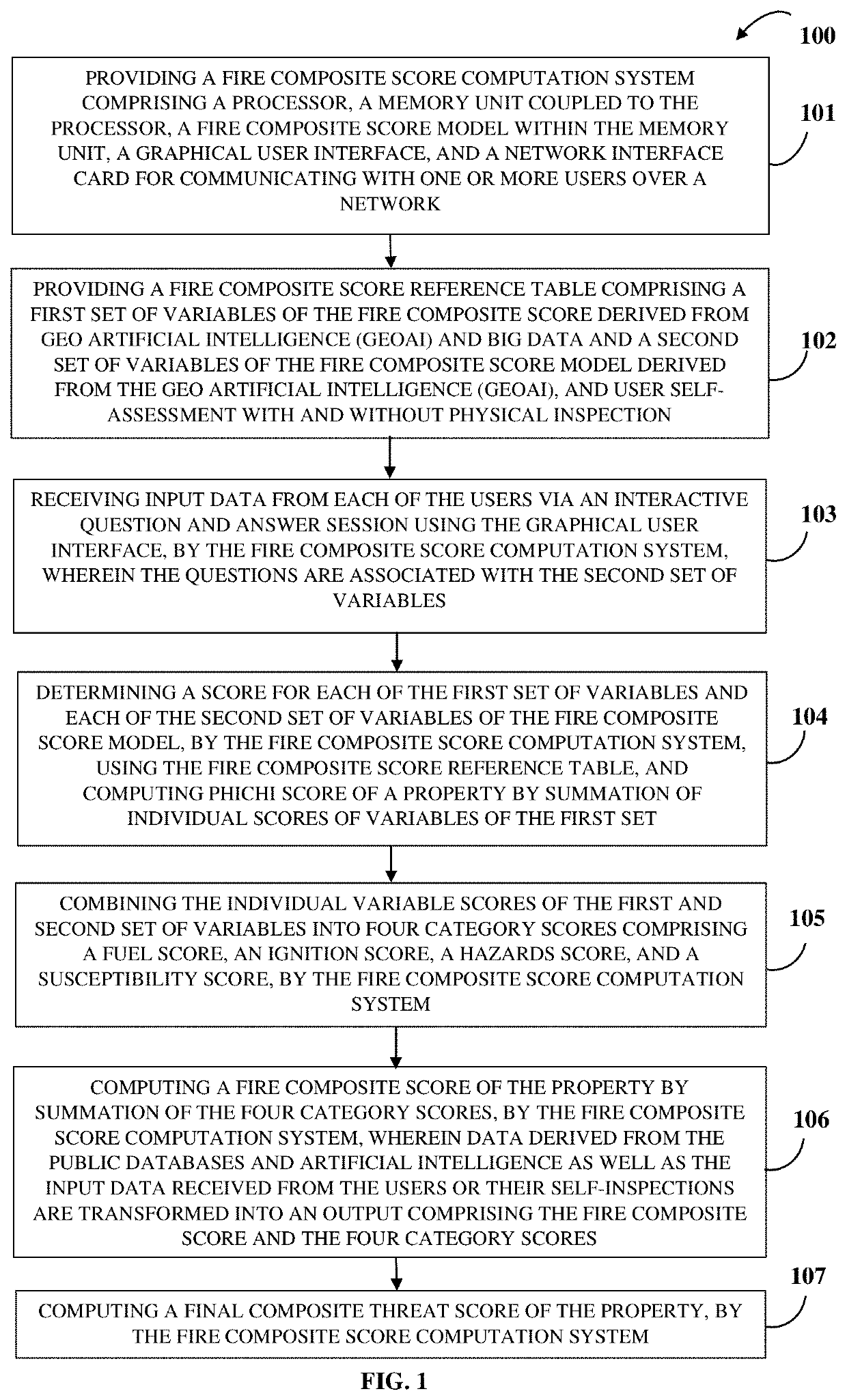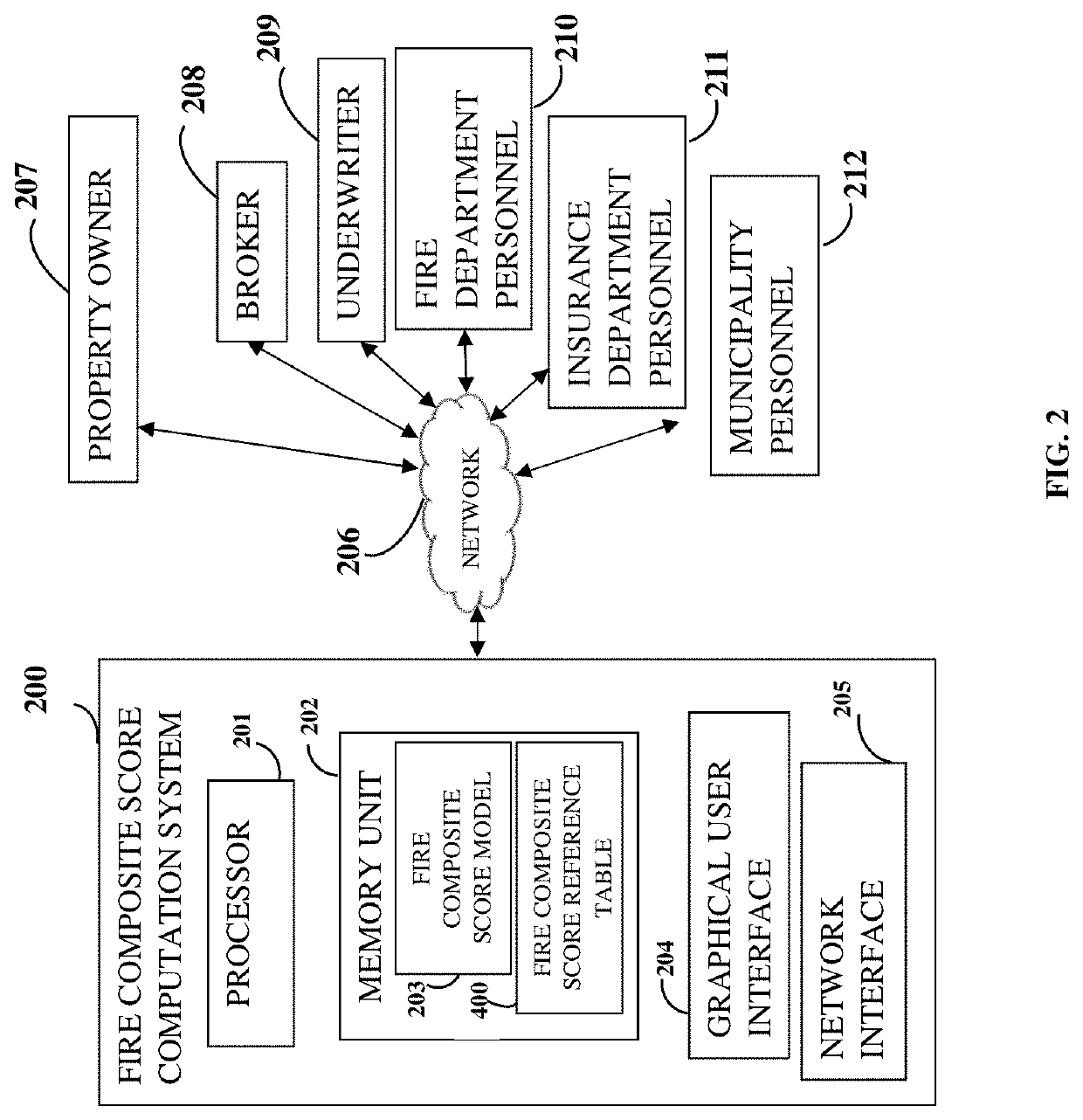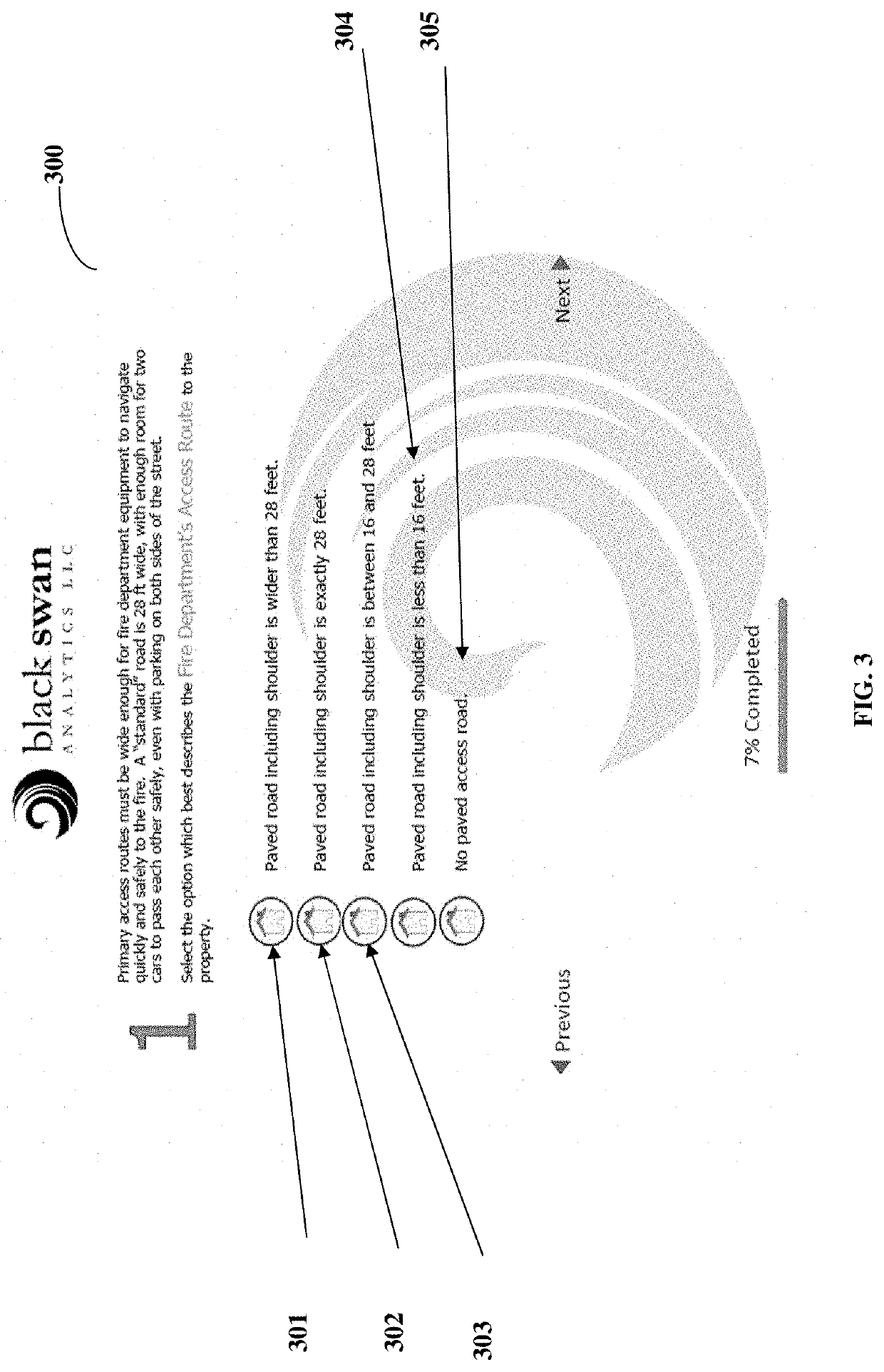Method and system for computing a phichi score, four category scores, a 4score, and a final composite threat (FCT) score for a property
a technology of phichi score and composite threat, applied in the field of wildfire risk management, actuarial science and property and casualty insurance industry, can solve the problems of substandard coverage, high cost, and exercise beyond the scope of this application, and achieve the effect of muted price differentiation created by the model
- Summary
- Abstract
- Description
- Claims
- Application Information
AI Technical Summary
Benefits of technology
Problems solved by technology
Method used
Image
Examples
Embodiment Construction
[0050]The foregoing summary, as well as the following detailed description of the invention, is better understood when read in conjunction with the appended drawings. For illustrating the invention, exemplary constructions of the invention are shown in the drawings. However, the invention is not limited to the specific components disclosed herein. The description of the component referenced by a numeral in a drawing is applicable to the description of that component shown by that same numeral in any subsequent drawing herein.
[0051]FIG. 1 exemplarily illustrates a method 100 for computing a PhiChi score 705, a complete fire composite score, or 4score, 605, a Final Composite Threat (FCT) Score 1203, and four category scores comprising a fuel score 604, an ignition score 602, a susceptibility score 603, and a hazards score 601, as shown in FIGS. 6-7, 9, 12 and Table-t. The method comprises providing 101 a fire composite score computation system 200, illustrated in FIG. 2. The fire comp...
PUM
 Login to View More
Login to View More Abstract
Description
Claims
Application Information
 Login to View More
Login to View More - R&D
- Intellectual Property
- Life Sciences
- Materials
- Tech Scout
- Unparalleled Data Quality
- Higher Quality Content
- 60% Fewer Hallucinations
Browse by: Latest US Patents, China's latest patents, Technical Efficacy Thesaurus, Application Domain, Technology Topic, Popular Technical Reports.
© 2025 PatSnap. All rights reserved.Legal|Privacy policy|Modern Slavery Act Transparency Statement|Sitemap|About US| Contact US: help@patsnap.com



